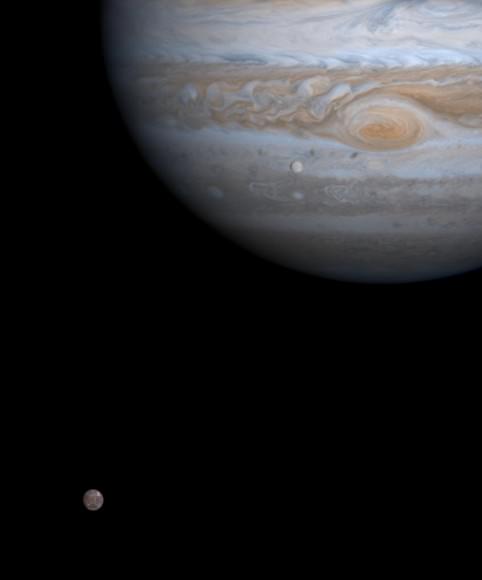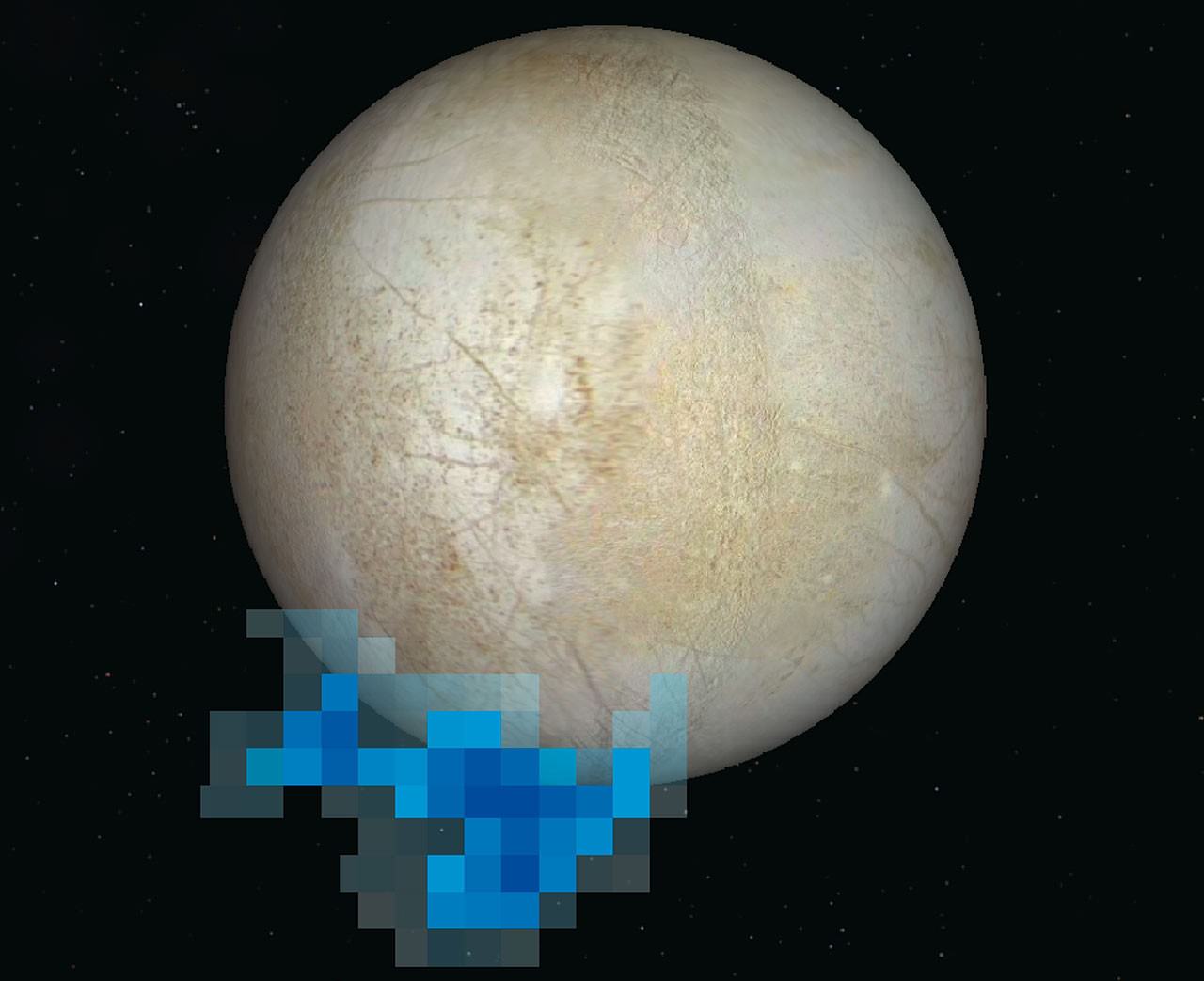It was about this time last year that Europa really began to excite us again. Following a sci-fi movie about the Jupiter moon, astronomers using the Hubble Space Telescope announced they had found possible water vapor near the icy moon — maybe from geysers erupting from its icy surface. (That is, if the finding was not due to signal noise, which researchers acknowledged at the time.)
As NASA ramped up (distant) plans to get close to Europa again, scientists began plumbing data from the Cassini spacecraft to see if its glance at the moon circa 2001 revealed anything. Turns out that the spacecraft didn’t see any sign of a plume. Which leads to the greater question, what is happening?
Now scientists are scurrying for a second look. Hubble is in the midst of a six-month search of the moon (from afar) to see if any more of the plumes are showing up. Now the theory is that the plumes, if they do exist, would be intermittent — at least, that’s according to the team looking at data from Cassini’s ultraviolet imaging spectograph (UVIS).

“It is certainly still possible that plume activity occurs, but that it is infrequent or the plumes are smaller than we see at Enceladus,” stated co-author Amanda Hendrix, a Cassini UVIS team member with the Planetary Science Institute in Pasadena. “If eruptive activity was occurring at the time of Cassini’s flyby, it was at a level too low to be detectable by UVIS.”
This finding was part of a greater set of observations showing that it’s not really Europa that is contributing plasma (superheated gas) to space — it’s the ultra-volcanic moon Io. And Europa itself is sending out 40 times less oxygen than previously believed to the area surrounding the moon.
“A downward revision in the amount of oxygen Europa pumps into the environment around Jupiter would make it less likely that the moon is regularly venting plumes of water vapor high into orbit, especially at the time the data was acquired,” NASA stated. This would stand in contrast to, say, Saturn’s Enceladus — which Cassini has seen sending plumes high above the moon’s surface.
The findings were presented at the American Geophysical Union meeting earlier this month and also published in the Astrophysical Journal. The research was led by Don Shemansky, a Cassini UVIS team member with Space Environment Technologies.
Source: Jet Propulsion Laboratory

